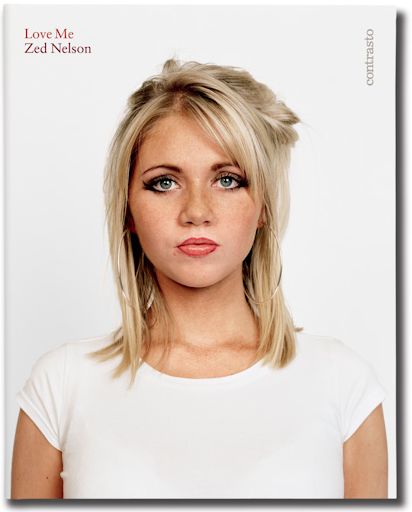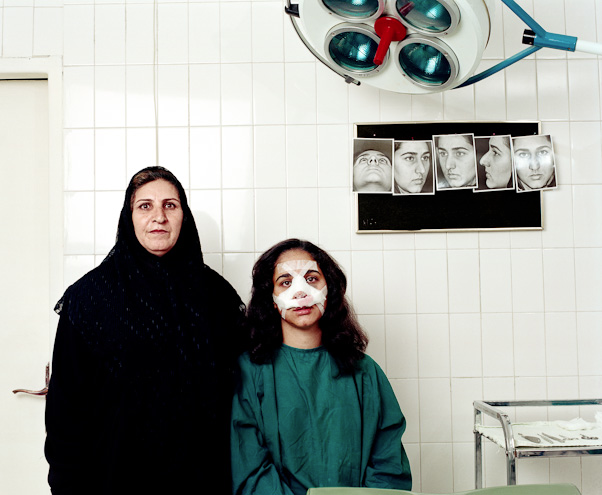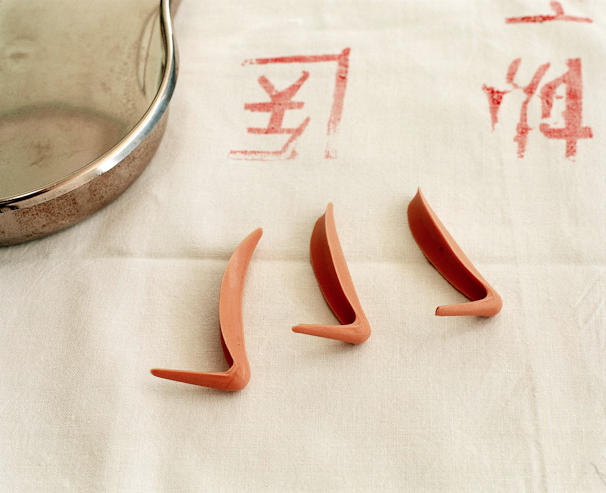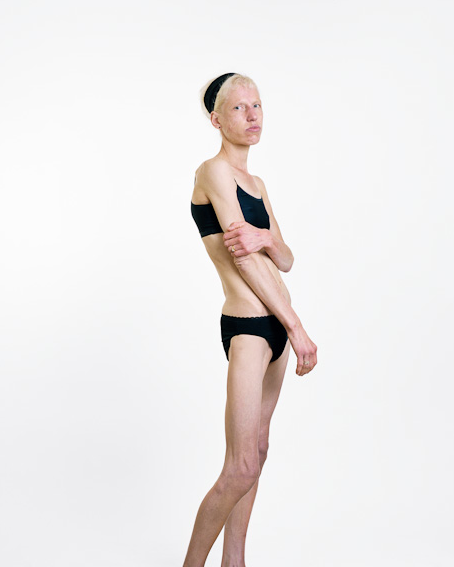Love Me: The Cross-Cultural Manufacturing of Beauty
By Maria Popova
What Chinese noses and hairy Brazilians have to do with the Moore’s law of breast.
The “beauty industry.” The glaring oxymoron of this very term — standardizing and industrializing something that’s supposed to be abstract and subjective and “in the eye of the beholder” — aptly reflects its status as one of the most controversial yet ubiquitous facets of culture. We’ve all read about, heard of or seen first-hand the various disjointed manifestations and consequences of humanity’s unhealthy obsession with “beauty” — eating disorders, plastic surgery addiction, plain old nacrissism and social discrimination — but capturing the complete, wide-angle story of this cultural idée fixe is an incredibly ambitious task.
That’s exactly what photographer Zed Nelson explores in Love Me — a gripping, powerful series of images that capture the conflicting social, psychological and economic rewards and penalties of appearance obsessions.
Beauty is a $160 billion-a-year global industry. The worldwide pursuit of body improvement has become a new religion.
The idea that blonde is best began as early as the eighteenth century when ethnologists, sociologists and English anthropologists such as Englishman Charles White began drawing up hierarchical gradations for mankind, starting with what were believed to be the lowliest — the negroes, bushmen and aborigines — to the yellow races and Slavs, until they reached the white race, thought to be the supreme species.” ~ The Observer
'I'm competing with men 20 years younger than me.' - Anthony Mascolo, 46. Liposuction to chin and abdomen.
New Jersey, USA
The book reveals the frightening commodification of beauty, both industrially and culturally, (did you know that ten years ago, reconstructing a woman’s breasts cost $12,000, compared to $600 today?), exposing the intricate network of transactions and businesses that govern it — the fashion, cosmetics, diet, medical and entertainment industries, with their powerful propaganda mechanisms and meticulous marketing plans.
‘Westernising’ the human body has become a new form of globalisation, with ‘Beauty’ becoming a homogenous brand. The more rigorously our vision is trained to appreciate the artificial, the more industries benefit.
Like it or not, we are judged, and judge, by appearance. Perhaps we are obsessed with the way our own bodies look because we know how instinctively judgemental we are of the bodies that we look at.
'I want to be thin. I was always very sporty at school. Now I am a skeleton.' - Fiona Harris, 44. Anorexic. 6.5 stone.
Winchester, UK
The body has, in a sense, become just another consumer purchase. Everyone can, in the spirit of our age, go shopping for bodily transformation. Banks now offer loans for plastic surgery. American families with annual incomes under $25,000 account for 30 per cent of all cosmetic surgery patients. Americans spend more each year on beauty than they do on education.
'Men's Health magazine (USA) hasn't had a hairy chest on its cover since 1995.' - Wall Street Journal
Copacabana Beach. Rio, Brazil.
From sexed up teenage club-hoppers to prison beauty queens to a brilliantly curated Alain de Botton quote, the book is a cover-to-cover gem that explores, with superb creative direction and a merciless confrontation with superficiality, the most uncomfortable fringes of cultural anthropology.
Nelson’s introductory statement about the project is very much worth a read. Explore the collection online, or grab a copy of Love Me for the real deal of glossy-paged coffeetable indulgence.
On a tangential design-pet-peeve aside, it’s worth noting that Nelson’s site exemplifies everything that a well-designed, slick, navigable, share-friendly photographer website should be, combining the seamlessness of Flash with the link shareability of HTML, all delivered in a brilliantly architectured and user-friendly interface — a welcome break from the unshareable, nightmarish to navigate flashturbation dominating today’s photographer portfolios. Hat tip to you, Sir Zed.
Psst, we’ve launched a fancy weekly newsletter. It comes out on Sundays, offers the week’s articles, and features five more tasty bites of web-wide interestingness. Here’s an example. Like? Sign up.
Related posts:
- Exactitudes: Cultural Photo-Anthropological Data Viz Why you aren’t nearly as unique as you think, or what 12 Japanese school children have to do with 12 homeless people in Rotterdam. Since 1994, photographer Ari Versluis and profiler Ellie Uyttenbroek have been trekking the globe together, recording Exactitudes — “exact attitudes” captured in people’s peculiar dress code...
- The Real Beauty Industry Sight, sound, motion, and more beauty than your beholder eyes can handle. The notion of beauty is among the most subjective, abstract concepts out there. (Despite what the cookie-cutter “beauty industry” may tell us.) But every once in a while, something comes by that is so fundamentally sublime in concept,...
- Perroquet: Photography, Science, Slow-Motion Beauty How three worlds of fascination collide through negative space and positive brilliance. ...
- Running The Numbers: Oceanographic Visualization What 20,500 tuna have to do with your old toothbrush, or how a plastic comb ended up on top of Mt. Fuji – Chris Jordan takes on the decline of marine ecosystems....
- Artist Spotlight: Chris Jordan What Van Gogh has to do with Big Tobacco and how piles of folded laundry put the prison system in perspective. The best of art is about something bigger than aestheticism, something that reflects on culture and makes a social statement that moves people. The work of artist Chris Jordan...
This entry was posted on Thursday, March 25th, 2010 at 5:37 am in culture, photography, psychology and was tagged awareness, books, cool, culture, photography, psychology.
Sunday, March 28
Love Me: The Cross-Cultural Manufacturing of Beauty | Brain Pickings
Subscribe to:
Post Comments (Atom)












Does a groom like yourself desire to discover the finest diamond wedding bands? Traditional jewelry would be the best way to go. Old-fashioned diamond wedding bands provide an archetypal appearance that gives the owner the stylishness of the past. Diamond Tough Garages
ReplyDelete